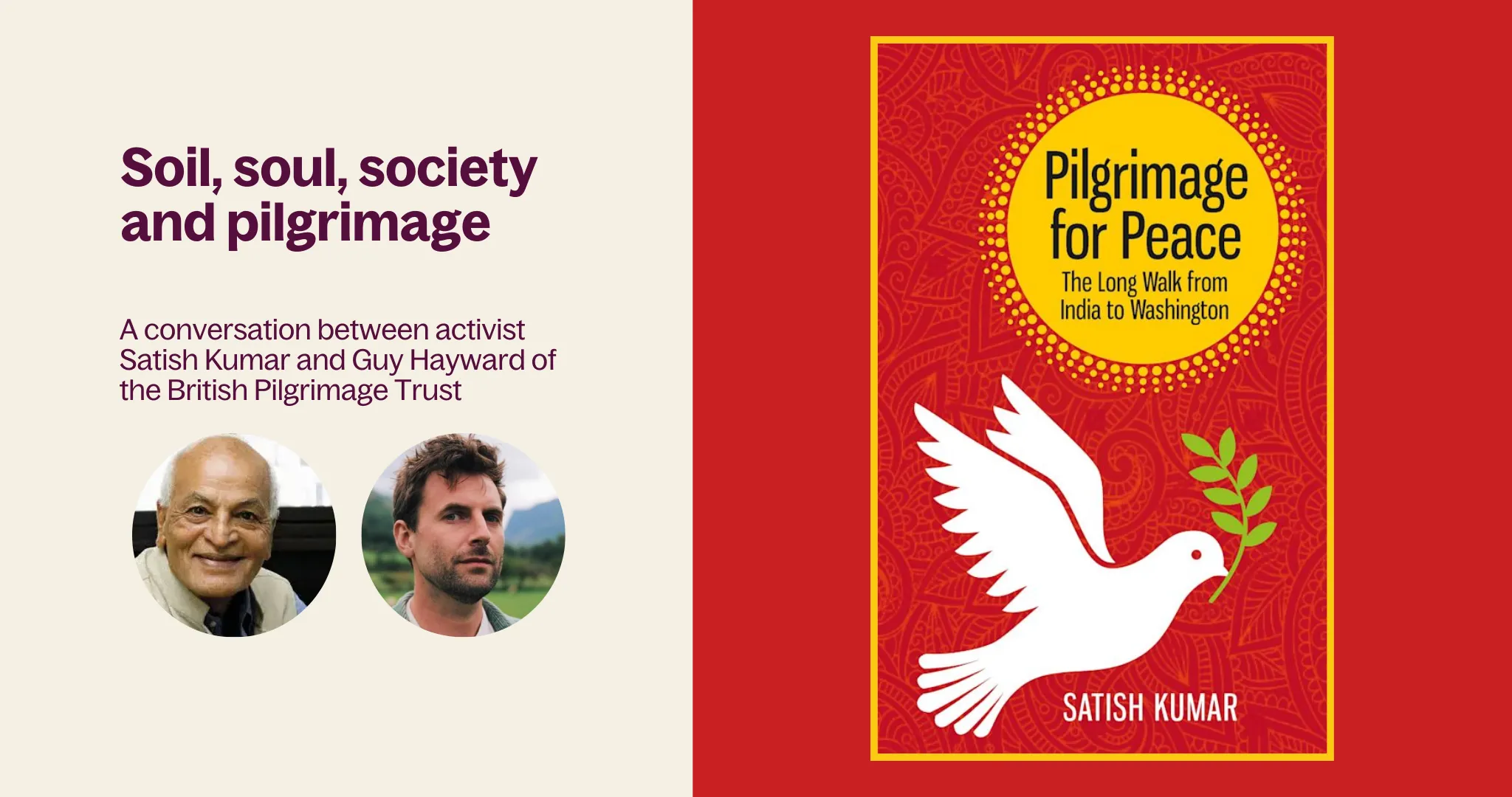Tips for the Pilgrim Novice
,


Pilgrim practices
Set your intention for the journey at the beginning – this can be a question you want help with, or something to bring into or let go of, in your life. To do this, you can do this silently in your mind, or more tangibly by lighting a candle, picking up a pebble to charge with your intention and carry with you and touch holy places with it along the way; or you can fill a holy water vial and drip in fonts.
Holy Places - when you arrive at a holy place, the basic rule is go into reverential mode as much as you are willing to, and whatever that means to you. This will happen naturally. But allow your ‘ritual self’ to become creative and open your eyes wide. Experience the place as much as you can, particularly in a tactile way. Here are a few ideas:
- General spiritual practices: meditation, prayer, connecting with nature, water, stones, trees, plants and animals, singing/chanting and being silent etc.
- Pilgrimage-specific practices: circumambulating a church before entering, lying down and looking at church ceiling (or ‘looking at sky’ meditation on hilltop or in churchyard), having a ‘holy nap’ in church, kneeling at the altar and thinking about things that matter to you, lighting candles, singing songs or reading poetry in the holy place, sign your name in the parish church visitors’ books, give donations to churches, contact relic – a shell, stone, personal to you etc. that you place on holy objects as you pass along the route, maybe give it away at the end by placing on a cairn in the cathedral, or keep it; and immerse in the wild water spots and imagine being cleansed, connect with trees and plants, and walk barefoot.
How to read a landscape (using Tristan Gooley’s mnemonic SORTED) - Look at the shape, overall character, the natural routes, any animal/human tracks you can identify, edges of fields and edges in general, pay attention to the marvellous details and names represented on maps.
Distance - how far should the novice pilgrim go? Most average pilgrims can easily manage 8 miles in a day. The comfortable upper end is 12 miles before the tipping point is reached where it becomes more about the physical act walking than engaging with the places along the route.
Look, listen and smell around you - easy to miss so much if you talk too much, or become too introverted (although both those things are good too).
Speak to locals you meet along the way and ask them any questions you are inspired to ask about their area, or their own lives. In general, be open to others.
When you come to a place/view that you find beautiful, stop and enjoy it. Look out for distant holy places and feel them as attractors.
Choose a special day to make your pilgrimage - national day of…, birthday, anniversary, and, if religious, a saint day, or a pagan/Christian festivals (e.g. Harvest, May Day, Easter) etc.
See the journey as your own personal artwork - the journey you have is made by you, it can never be repeated by you or anyone, so make it as beautiful as you can.
Kit
Water purifier - for drinking from holy wells. Grayl Purifier or MSR Guardian devices, to be virus- and bacteria-free.
Shoes - distinguish between what’s appropriate for summer and winter. Mesh quick-drying very breathable trainers for summer (with decent tread), and heavier walking boots for winter. Maybe something in between those two footwear options for Spring/Autumn.
Navigation - Remote Battery Pack. OS Maps or Guru Maps apps, download GPX route before you go, and get to grips with smartphone navigation. You won’t regret the move away from paper maps, as you can turn you phone to airplane mode and still locate yourself on the app. So much easier than paper maps to find your way (for extreme mist-prone high-altitude mountain walking you may need to combine with paper maps and compass as a backup). Anker brand remote battery packs are great for pre-charging and having on-the-go charging capability so you can always find your way.
Food / Water - a banal suggestion but important - just always think at least 2 meals ahead if walking a multi-day pilgrimage.
Biodegradable wipes/plan loo stops ahead - don’t let yourself be caught out. If camping out, wipes also double up as for general body cleaning, so showers not necessary.
Hat - straw for summer, boiled felt to keep the rain off in winter.
Pilgrim staff - a triple ‘prop' - a hazel wood staff propels you forward uphill and slows you downhill, props you up and provides a counterforce to the weight of your backpack pulling you backwards, and is a dramatic prop that says ‘I am a pilgrim’.
Split drainpipe for placing over barbed wire to make it safe to traverse.
Logistics
Check whether pubs, churches or other places along the way are open (or serving food) before you go. Big Barn map is great for discovering where you can buy local food produce. It’s great to get in touch with church wardens anyway because nice for them to know people are visiting.
Further reading
.webp)
.svg)
.svg)





_-_geograph.org.uk_-_1626228.webp)
Comments
0 Comments
Login or register to join the conversation.
Tom Jones
Lorem ipsum dolor sit amet, consectetur adipiscing elit. Suspendisse varius enim in eros elementum tristique. Duis cursus, mi quis viverra ornare, eros dolor interdum nulla, ut commodo diam libero vitae erat. Aenean faucibus nibh et justo cursus id rutrum lorem imperdiet. Nunc ut sem vitae risus tristique posuere.
Tom Jones
Lorem ipsum dolor sit amet, consectetur adipiscing elit. Suspendisse varius enim in eros elementum tristique. Duis cursus, mi quis viverra ornare, eros dolor interdum nulla, ut commodo diam libero vitae erat. Aenean faucibus nibh et justo cursus id rutrum lorem imperdiet. Nunc ut sem vitae risus tristique posuere.